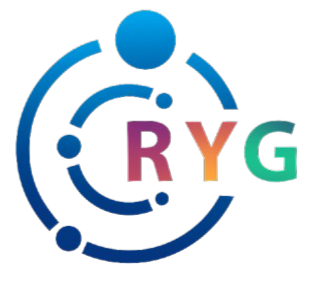1. Introduction: The Power of Color in Urban Environments
Colors are fundamental elements in shaping the atmosphere and social fabric of cities. Urban design is not solely about infrastructure and functionality; it also involves aesthetic choices that influence how residents feel and interact. The thoughtful application of color can promote a sense of calm, foster community engagement, and enhance overall well-being. Modern examples, such as My Sweet Town, demonstrate innovative ways to incorporate vibrant yet harmonious color schemes that support these urban goals.
Contents
- The Psychological Impact of Colors on Human Emotions
- Historical Perspectives: Color Use in Urban Planning
- The Science Behind Colors and Light in Urban Settings
- Practical Strategies for Incorporating Colors to Promote Calm and Community
- Non-Obvious Elements: Cultural and Social Dimensions of Color
- Beyond Aesthetics: Functional Aspects of Color in Urban Design
- Future Trends: Emerging Technologies and Innovations in Color Use
- 9. Conclusion: Designing Cities That Calm and Connect
2. The Psychological Impact of Colors on Human Emotions
a. How specific hues evoke calmness (e.g., blues and greens)
Research shows that cool colors like blue and green have a soothing effect on individuals, reducing stress and promoting relaxation. Urban parks and waterfront areas often utilize these hues to create tranquil environments. For instance, cities that incorporate green spaces with lush foliage and blue water features tend to see lower levels of anxiety among residents.
b. Colors that foster social interaction and community spirit (e.g., warm tones)
Warm colors like orange, red, and yellow are associated with energy, warmth, and friendliness. These tones encourage social interaction in communal spaces such as plazas, outdoor cafes, and street festivals. An inviting palette can make public areas more accessible and inclusive, boosting community cohesion.
c. Connection between color perception and mental well-being
Color influences mood and mental health significantly. Studies indicate that environments with balanced and appropriate color schemes can improve mood, decrease feelings of depression, and enhance overall mental well-being. In urban design, integrating colors that evoke calm and social engagement supports healthier, happier communities.
3. Historical Perspectives: Color Use in Urban Planning
a. Traditional color schemes and their societal meanings
Historically, color choices in cityscapes reflected societal values and cultural meanings. For example, in medieval Europe, vibrant dyes like red and gold signified wealth and power, often seen in ceremonial architecture. Similarly, in East Asian cities, red symbolized good fortune and was used extensively in temples and gates.
b. Evolution of color choices in city landscapes over centuries
Over time, urban colors shifted towards more subdued and practical palettes, influenced by industrialization and modernist aesthetics. The use of pastel shades in the early 20th century aimed to create more welcoming environments amid growing urban density. Contemporary urban design now blends historical influences with new sustainability and inclusivity considerations.
c. Lessons from history for contemporary design
Understanding historical color symbolism helps modern planners create spaces that resonate culturally and emotionally. For example, incorporating traditional colors in revitalization projects can foster a sense of identity and continuity, making neighborhoods more cohesive and meaningful.
4. The Science Behind Colors and Light in Urban Settings
a. How natural phenomena like rainbows illustrate color effects (refracting light)
Rainbows demonstrate how light interacts with water droplets, dispersing into a spectrum of colors. This natural phenomenon reminds us that color perception depends on light and environmental conditions, influencing how colors appear in urban spaces at different times of day and weather.
b. The role of lighting and reflective surfaces in city aesthetics
Lighting design and reflective surfaces amplify or soften colors, affecting mood and safety. For example, well-placed LED lighting can highlight colorful murals, while reflective materials on building facades can create dynamic visual effects, enhancing nighttime vibrancy.
c. Modern tools and materials that influence color application in urban design
Advancements include high-performance paints, thermochromic coatings, and smart lighting systems that adapt to environmental conditions. These tools enable architects and urban planners to create adaptable, sustainable, and visually engaging environments.
5. Practical Strategies for Incorporating Colors to Promote Calm and Community
a. Selecting color palettes for parks, walkways, and communal areas
Effective palettes often combine calming cool tones with warm accents to balance serenity and vitality. For example, a park might feature soft green lawns with vibrant orange benches, encouraging relaxation while inviting social interaction.
b. Balancing vibrant and subdued tones for harmony
Achieving harmony involves using subdued shades as backgrounds and selective bright colors for focal points. This approach prevents overstimulation and maintains a cohesive visual environment, crucial for mental well-being.
c. Case study: «My Sweet Town»—integrating community feedback into colorful design
In My Sweet Town, developers incorporated residents’ preferences for vibrant, community-oriented colors in public spaces. The result was a lively, welcoming town that fosters social bonds and reduces urban stress, exemplifying how user input enhances color strategy effectiveness.
6. Non-Obvious Elements: Cultural and Social Dimensions of Color
a. Cultural significance of colors in different communities
Colors carry specific meanings across cultures—white symbolizes purity in Western societies but mourning in some Asian cultures. Recognizing these differences is essential for inclusive urban planning that respects cultural identities.
b. How color choices can either unite or divide diverse populations
Thoughtful color use can promote unity, such as shared community colors or culturally significant hues, while poorly chosen palettes risk alienating groups. Inclusive strategies involve engaging diverse communities in color decisions to foster cohesion.
c. The importance of inclusivity in color planning
Inclusive planning ensures that colors do not perpetuate stereotypes or marginalize groups. Instead, they should reflect shared values and promote a sense of belonging for all residents.
7. Beyond Aesthetics: Functional Aspects of Color in Urban Design
a. Using color for wayfinding and safety
Color coding signage and pathways enhances navigation and safety. Bright, contrasting colors help distinguish routes and alert pedestrians to hazards, improving overall urban functionality.
b. Impact of color choices on weather perception and comfort (e.g., heat absorption)
Light-colored surfaces reflect heat, reducing urban heat islands, while dark colors absorb warmth, which can be beneficial in colder climates. Urban planners leverage this understanding to improve comfort and energy efficiency.
c. The role of color in environmental sustainability efforts
Color choices in materials and coatings can contribute to sustainability—such as reflective paints that lower cooling needs or eco-friendly dyes that minimize environmental impact.
8. Future Trends: Emerging Technologies and Innovations in Color Use
a. Smart lighting and dynamic color-changing surfaces
Innovations include adaptive lighting that responds to time, weather, or events, creating vibrant or calming effects as needed. These systems can make urban spaces more engaging and responsive.
b. The potential of augmented reality to enhance urban color experiences
AR technology allows residents and visitors to experience layered colors and designs via smartphones or AR glasses, enriching interactions with cityscapes and fostering a sense of connection.
c. How «My Sweet Town» exemplifies innovative color integration in future urban landscapes
By integrating real-time color adjustments and interactive elements, My Sweet Town showcases a future where urban colors adapt dynamically to community needs and environmental conditions, creating harmonious and sustainable living environments.
9. Conclusion: Designing Cities That Calm and Connect
“Colors are more than aesthetics; they are vital tools that shape emotional health and social cohesion in urban spaces.”
As urban environments evolve, the deliberate use of color remains a powerful strategy to promote tranquility and foster community bonds. Thoughtful planning that considers psychological, cultural, and functional factors can transform cities into spaces where individuals thrive and communities flourish. The integration of emerging technologies promises even more innovative ways to harness the emotional and social potential of colors, making our cities better places to live.
Urban designers and communities are encouraged to prioritize emotional and social impacts when selecting colors, recognizing their role as a bridge between individual well-being and communal harmony. Ultimately, colors are not just visual elements—they are foundational to creating inclusive, vibrant, and resilient urban landscapes.



Leave a Reply